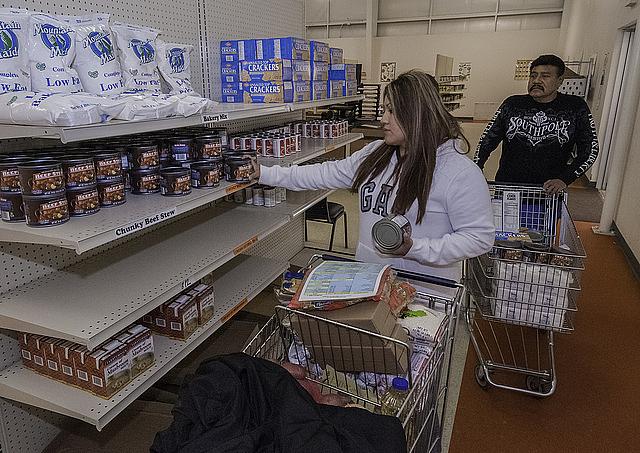Reporting on food insecurity in Indian Country demands flexibility

It is not unusual for stories to take unusual twists and turns. With my 2015 National Fellowship project though, the name of the game became “flexibility” early on.
American Indian and Alaska Natives make up about 1 percent of the total U.S. population. However, more than a quarter qualify for food stamp benefits through the SNAP program, compared to 13 percent of the overall population. As of 2012, more than 12 percent of all Women, Infants, and Children program participants nationwide are indigenous, including almost 10 percent of all infants and 13.7 percent of all children.
So with those disproportionate numbers in mind, my project looked at the impacts of food insecurity and hunger in Indian Country.
Finding the hard data for this project was surprisingly easy. There are multiple recent studies on the effects of food insecurity on physical and mental health that go far more in-depth than the nutrition basics covered in school. The challenge was finding a willing face to put to the problem.
As another Dennis A. Hunt Fund grantee experienced with her project on obesity and poverty, income levels and access to food are not exactly topics many people want to candidly discuss when it directly impacts them. My original plan was to talk to children about how it feels to go to bed hungry and how it has affected them. I had several interviews lined up that were all ultimately nixed by the parents. Most were canceled out of pride, as the public stigma attached to accepting assistance is still very real. A handful canceled because they were afraid of Child Protective Services stepping in if it got out in print that their family relied on SNAP benefits or food pantries to feed their children.
After getting shut down multiple times, I had to adjust my mindset and reframe my source hunt. As journalists, we are often reminded to be gentle when covering communities that are facing or recovering from trauma. Given the number of physical and mental health determinants shaped by food, that mantra could easily apply when interviewing the chronically hungry.
I also forced myself to stop thinking like a reporter for a minute and think like a parent. How would I react if one of my colleagues asked to talk to my 6-year-old on the record about something that could potentially speak volumes about my ability (or my husband’s) as a provider? I am honestly not sure I would have the courage to allow that interview.
Social media was a huge help when it came to finding first-hand sources on this project when my usual methods failed. Multiple post shares and call-outs on Facebook and Twitter eventually led me to people who had children and were willing to talk about the long-term impact that food insecurity has had on their lives.
I knew child hunger and food insecurity are real issues in this country. But multiple interviews with several people who had grown up hungry helped me paint a more thorough illustration of what the research had found on hunger’s long- and short-term effects on the body.
The need for flexibility even carried through to the story topics themselves. In an effort to minimize the emphasis on poverty that often appears in mainstream media’s coverage of Indian Country and to show that local-level steps are being taken to address food insecurity, my original proposal called for a story that relied on the results of a Freedom of Information Act request for all applicable self-governance contracts between tribes and the federal government.
For the uninitiated, a self-governance contract is an agreement between the federal government and a tribe that allows the tribe to run a program at the local level, such as an Indian Health Services clinic or a school normally overseen by the Bureau of Indian Education.
FOIA requests are a great tool and can be an invaluable asset in health coverage. However, they are not exactly compatible with story deadlines, especially when the request is as massive as mine was.
Although I eventually found some of the requested information by scouring federal documents, the FOIA request was not fulfilled quickly enough for me to do that portion of the series. I wound up having to turn to Plan B and instead, and looked at some of the economic development efforts tribes are pursuing to address food insecurity.
The big things to keep in mind when wrestling with food insecurity and hunger stories: Be flexible — keep a Plan B and maybe even a Plan C on standby if possible. Remember to be gentle with potential and actual sources. Put yourself in their shoes when framing questions. And be patient — to a point.
[Photo by USDA via Flickr.]

